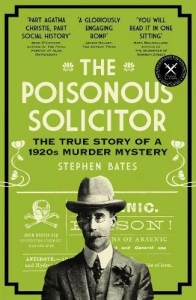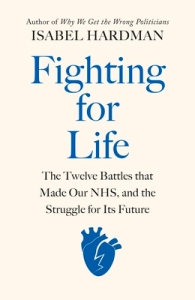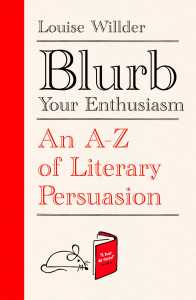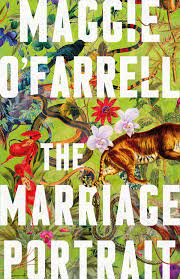Books I Read in August 2024
September 9, 2024 · 12:28 pm
The Marriage Portrait by Maggie O’Farrell is a fictionalised account of the marriage of 15-year-old Lucrezia di Cosima de’Medici to Alfonso, Duke of Ferrera in sixteenth century Florence, merging two powerful family dynasties. Lucrezia would be dead barely a year later, allegedly of “putrid fever” but rumours persist that she was murdered, as per the Duke’s confession in Robert Browning’s poem ‘My Last Duchess’. O’Farrell’s novel imagines events from Lucrezia’s point of view as a young adolescent in an arranged marriage to an older man with the sole purpose of producing a male heir. Renaissance Italy isn’t an period of history I knew a great deal about, but it is very much brought to life by O’Farrell’s vivid descriptions and the suspense caused by Lucrezia’s growing realisation that her husband is plotting to kill her when she fails to fall pregnant. Historical fiction is a relatively new direction for O’Farrell following Hamnet in 2020 and her latest novel does not disappoint.
 My trip to Hay-on-Wye earlier this year inspired me to pick up The Poisonous Solicitor by Stephen Bates – a true crime book about a murder case in the 1920s in the small Welsh village close to the English border, in the days when it still had a train station and long before it became a book town. In 1922, local solicitor Major Herbert Rowse Armstrong was sentenced to death after being found guilty of poisoning his 48-year-old wife Katherine with arsenic in a case that is said to have inspired several Golden Age of Crime novels. Previous published accounts of the trial at Hereford either sit squarely on the side of the prosecution or the defence, whereas Bates reaches a more nuanced conclusion, showing that a fair trial and a fair verdict are very different things. Bates is very good at painting a broader picture of the socio-economic landscape of Britain in the years following the First World War alongside a thorough account of an intriguing case.
My trip to Hay-on-Wye earlier this year inspired me to pick up The Poisonous Solicitor by Stephen Bates – a true crime book about a murder case in the 1920s in the small Welsh village close to the English border, in the days when it still had a train station and long before it became a book town. In 1922, local solicitor Major Herbert Rowse Armstrong was sentenced to death after being found guilty of poisoning his 48-year-old wife Katherine with arsenic in a case that is said to have inspired several Golden Age of Crime novels. Previous published accounts of the trial at Hereford either sit squarely on the side of the prosecution or the defence, whereas Bates reaches a more nuanced conclusion, showing that a fair trial and a fair verdict are very different things. Bates is very good at painting a broader picture of the socio-economic landscape of Britain in the years following the First World War alongside a thorough account of an intriguing case.
 Fighting For Life by Isabel Hardman is a biography of the National Health Service framed around 12 “battles” from its post-war creation to responding to emergencies such as COVID-19. I always recommend Hardman’s book Why We Get the Wrong Politicians to those who want to understand why contemporary British politics is as ridiculous as it is, and her assessment of the first 75 years of the NHS is just as good at unpicking an emotive and much misunderstood subject. Rather than a gushing love letter or a take down of this vast and complex organisation, Hardman is scrupulously fair and balanced in describing how it has fared over several turbulent decades facing numerous political and economic challenges. She is at her best writing about the impact the NHS has had on its patients, including low points such as the treatment of unmarried mothers and the contaminated blood scandal, whereas the parts about structural reform policy are inevitably a bit drier.
Fighting For Life by Isabel Hardman is a biography of the National Health Service framed around 12 “battles” from its post-war creation to responding to emergencies such as COVID-19. I always recommend Hardman’s book Why We Get the Wrong Politicians to those who want to understand why contemporary British politics is as ridiculous as it is, and her assessment of the first 75 years of the NHS is just as good at unpicking an emotive and much misunderstood subject. Rather than a gushing love letter or a take down of this vast and complex organisation, Hardman is scrupulously fair and balanced in describing how it has fared over several turbulent decades facing numerous political and economic challenges. She is at her best writing about the impact the NHS has had on its patients, including low points such as the treatment of unmarried mothers and the contaminated blood scandal, whereas the parts about structural reform policy are inevitably a bit drier.
 Blurb Your Enthusiasm by Louise Willder looks at all the aspects of book covers that are designed to hook the potential reader. Willder has been a copywriter at Penguin for 25 years and knows a thing or two about blurbs having written a few thousand of them in that time. She presents a whole range of examples across all genres to illustrate the importance of keeping the description pithy, which is something I aim for with my blog reviews except I am not explicitly attempting to market the book in the specific way that publishers do. The most successful blurbs tend to be those which capture the author’s voice rather than a precise summary of the contents, although it is of course the bad blurbs and misleading quotes which are the most fun to read about here. Like How Words Get Good by Rebecca Lee, this book is stuffed with anecdotes and bookish facts which will entertain bibliophiles everywhere. It left me with a new appreciation of the work that goes into producing blurbs and also explains why Donna Tartt has resisted all attempts to change the blurb or cover design of ‘The Secret History’ – when it works, it works.
Blurb Your Enthusiasm by Louise Willder looks at all the aspects of book covers that are designed to hook the potential reader. Willder has been a copywriter at Penguin for 25 years and knows a thing or two about blurbs having written a few thousand of them in that time. She presents a whole range of examples across all genres to illustrate the importance of keeping the description pithy, which is something I aim for with my blog reviews except I am not explicitly attempting to market the book in the specific way that publishers do. The most successful blurbs tend to be those which capture the author’s voice rather than a precise summary of the contents, although it is of course the bad blurbs and misleading quotes which are the most fun to read about here. Like How Words Get Good by Rebecca Lee, this book is stuffed with anecdotes and bookish facts which will entertain bibliophiles everywhere. It left me with a new appreciation of the work that goes into producing blurbs and also explains why Donna Tartt has resisted all attempts to change the blurb or cover design of ‘The Secret History’ – when it works, it works.
Filed under Books
